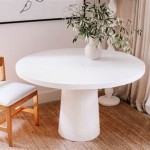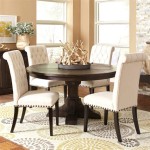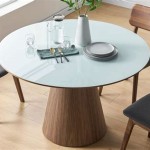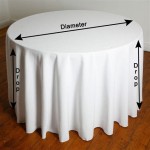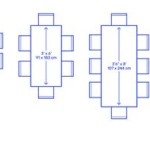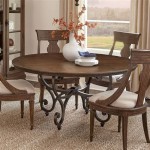Are Round Or Square Dining Tables Better For Small Spaces?
Choosing the right dining table for a small space can be a challenge. The table needs to be functional, fitting comfortably within the room without making it feel cramped. Both round and square tables offer distinct advantages and disadvantages in these limited environments. The ideal choice depends on the specific room layout, the user's needs, and aesthetic preferences. This article explores the pros and cons of each shape to assist in making an informed decision.
Round Tables: Space Saving and Social
Round tables are often touted as being better for small spaces due to their perceived ability to maximize seating while minimizing obstruction. This perception stems from several key characteristics. First, the absence of corners allows for more flexible seating arrangements. In a square or rectangular table, each corner represents a fixed point that can limit the number of chairs that comfortably fit around it. With a round table, chairs can be more easily added or removed as needed, accommodating varying numbers of diners without significantly impacting the flow of traffic in the room.
Second, round tables can encourage a more intimate and social dining experience. Everyone seated around a round table is equidistant from the center, fostering conversation and a sense of unity. This feature is particularly beneficial in smaller spaces where fostering a connection between people is often a priority. Furthermore, the lack of a defined "head" of the table creates a more egalitarian setting, suitable for casual gatherings or informal meals.
Third, the rounded edges of these tables contribute to a smoother flow and reduce the likelihood of bumping into sharp corners, a significant advantage in tight quarters. Sharp corners on square or rectangular tables can pose a safety hazard, especially in homes with children. The smooth curves of a round table create a more forgiving and safer environment.
However, round tables are not without their limitations. They can be less practical for serving food, particularly larger meals or buffet-style spreads. The center of the table can become congested, making it difficult for everyone to reach dishes. Lazy Susans or tiered serving platters can help alleviate this issue, but they add to the overall cost and may not be suitable for all dining occasions.
Another potential drawback is that round tables can feel awkward against walls. While visually appealing in the center of a room, small dining areas often necessitate placing the table against a wall to maximize space. This placement can negate some of the benefits of the round shape, as one side of the table becomes inaccessible. In these situations, other shapes may be more appropriate.
Square Tables: Efficient and Functional
Square tables, including those that are rectangular but relatively close in length and width, offer a different set of advantages for small spaces. They are often more efficient at utilizing space, particularly in rooms with straight walls and distinct corners. A square table can be easily pushed against a wall or placed in a corner, freeing up valuable floor space. This arrangement is particularly advantageous in apartments or small homes where every square foot counts.
Square tables can also provide a more structured and organized dining experience. They offer a clear sense of order and symmetry, which can be appealing to those who prefer a more formal setting. The defined edges of a square table make it easier to set the table and arrange dishes in an organized manner. This can be particularly helpful when serving larger meals or hosting dinner parties.
Moreover, square tables can be more versatile in terms of seating arrangements. They can comfortably accommodate two people facing each other, or four people with one seated on each side. Adding leaves or extensions can further increase the seating capacity, making them suitable for both everyday use and occasional gatherings. This adaptability makes square tables a practical choice for small spaces where flexibility is essential.
Conversely, square tables can feel cramped and less inviting in very small spaces. The sharp corners can create a feeling of confinement and hinder movement around the table. This is especially true if the table is too large for the room. Careful consideration must be given to the dimensions of the table and the available space to avoid creating a claustrophobic atmosphere.
Another potential disadvantage is that square tables can be less conducive to conversation. People seated across from each other may find it difficult to engage in a group discussion, especially if the table is large. This can be mitigated by choosing a smaller square table or by arranging the seating in a way that encourages interaction.
Key Considerations When Choosing
Several factors should be taken into account when deciding between a round and a square table for a small space. The first is the shape of the room. Square or rectangular rooms tend to be better suited for square tables, while oddly shaped rooms may benefit from the flexibility of a round table. Consider the existing furniture and layout of the room and how the table will fit into the overall design.
The second is the intended use of the table. If the table will primarily be used for casual meals and intimate gatherings, a round table may be the better choice. If it will be used for larger meals and more formal occasions, a square table with extensions may be more practical. Think about the typical number of people who will be using the table regularly and choose a size that can comfortably accommodate them.
The third is the overall aesthetic you are trying to achieve. Round tables tend to create a more relaxed and informal atmosphere, while square tables can be more formal and structured. Consider the style of your home and choose a table that complements the existing décor. The material and finish of the table should also be taken into account, as these factors can significantly impact the overall look and feel of the room.
The size of the table is another crucial factor. In a small space, it is essential to choose a table that is appropriately sized for the room. A table that is too large will overwhelm the space and make it feel cramped, while a table that is too small may not be functional. Measure the available space carefully and choose a table that allows for comfortable movement around it.
Finally, consider the base of the table. Pedestal bases can provide more legroom and allow for more flexible seating arrangements, while legged tables can be more stable and offer a more traditional look. The choice of base will depend on personal preference and the overall style of the room.
Ultimately, the decision between a round and a square dining table for a small space is a personal one. By carefully considering the advantages and disadvantages of each shape, along with the specific needs and preferences of the user, it is possible to choose a table that is both functional and aesthetically pleasing.

Best Shape Of Dining Table For Small Space

Why A Round Dining Table Might Be Your Best Option Abide Interiors

Is It Good To Have A Round Or Square Dining Table

How To Set A Dining Table Based On The Shape

Find The Perfect Dining Table In Five Simple Steps Mydeal

Why You May Need A Round Dining Table The Decorologist

How To Choose Dining Table Size Dimensions Macy S

13 Small Dining Room Ideas And Decorating Tricks

Six Of The Best Small Space Dining Tables Bright Bazaar By Will Taylor

The 7 Best Dining Tables And How To For One Reviews By Wirecutter
Related Posts

